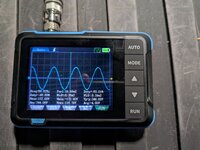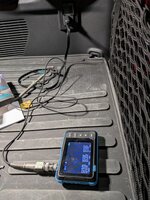Can't take a sine wave vs square wave at the same voltage and frequency = low end cheap component min design.Since the AC is rectified into DC I am not worried about the LiFePo4 batteries, rather the electronics that convert the AC to DC. Every power station manufacturer will tell you not to plug it into a modified sine wave inverter because the modified sine wave may damage the electronics. I've got a similar Fniri unit arriving Sunday and will be checking out the inverter waveform and noise. I'd rather spend a little money on a DC to DC charger than risk destroying expensive portable power stations.
Same for same a square wave is more wattage or power vs a sinusoidal wave. The square wave is al harder on power components, on and off more abruptly. Steep wave front.





